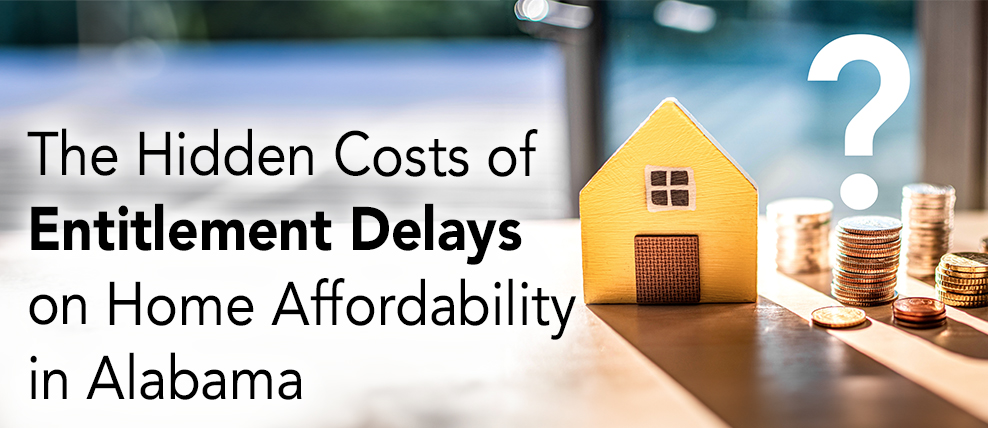Home prices don’t start with lumber and concrete. They start with land and more specifically, with the entitlement process required to transform raw land into build-ready lots. The longer and more complex this process becomes, the more home prices rise.
The Alabama entitlement and land development process controls how land is subdivided and prepared for residential use. It shapes community growth and directly affects the availability and affordability of new housing. The time, cost, and municipal procedures required to create build-ready residential lots have a direct impact on the price and type of new homes available in the market.
On paper, Alabama law suggests a straightforward plat approval process. For example, Ala. Code § 11-52-32(a) states that a planning commission must approve or deny a plat within 30 days of the hearing, or the plat is deemed approved. Boulder Corp. v. Vann, 345 So.2d 272 (Ala. 1977). In practice, however, a 30-day approval is virtually unheard of. Developers routinely experience months, if not years, of revisions, engineering comments, delays, and repeat hearings before a decision is reached.
Alabama law also makes clear that a subdivision cannot be denied simply because neighbors object or because the development is viewed as “out of character” with surrounding land uses. Smith v. Mobile, 374 So.2d 305 (Ala. 1979); Ex parte Frazer, 587 So.2d 330 (Ala. 1991). Yet, these are some of the most common objections raised during hearings. Rather than entering costly litigation that can take years, developers often attempt to negotiate through repeated redesigns, which only adds more time and expense.
In some municipalities, transforming raw land into build-ready lots can take years. Cities often require detailed engineering plans, traffic studies, hydrology reports, geotechnical studies, or specimen tree surveys before a rezoning or subdivision application will even be considered. These six-figure upfront costs limit the number and type of homes that can be built, create barriers for Alabama residential land developers, and increase the cost basis of the land itself.
What is the consequence of all of this cost and delay? Higher home prices, fewer homes built,and limited housing choices. When approvals are conditioned on large lot sizes, large square footage requirements, or architectural mandates, the impact on affordability is compounded. Every delay and every municipal requirement translates to added carrying costs, consultant fees, engineering costs, and interest payments. Those costs ultimately flow to the builder and, finally, the homebuyer.
If Alabama wants to increase homeownership and reduce housing costs, it must follow the lead of other states and modernize its land development process. The goal is simple:
More housing choices. More competition. Greater affordability. Stronger communities.

